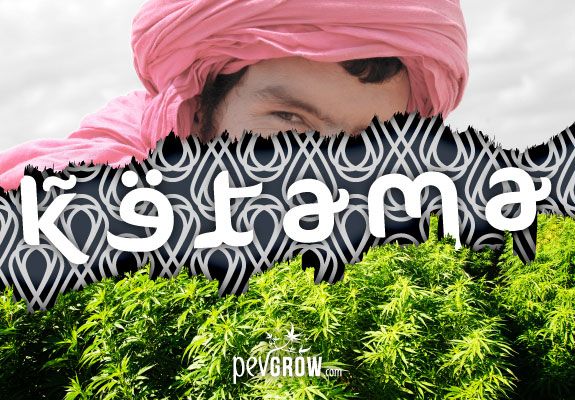

In constant struggle for the regulation of cannabis, mainly in the medicinal field.
07-09-2017 08:00:45 - Updated: 7 September, 2017
At the foot of the Rif Mountain Range, in Morocco, is one of the largest temples of hashish production in the world: Issaguem, better known as Ketama. A town of a little more than 1500 inhabitants, where the drumming of the sieves resounds at the hands of the Berbers, in charge of elaborating some of the best Hash in the world.
Can you imagine a land where marijuana plants grow freely over tens of kilometres without the authorities intervening? This land exists and is called Ketama, a town located in the Rif region, the town of Ketama has been producing hashish since the fifteenth century. So far there is nothing strange in all that we are telling, however, if today we want to dedicate a small space in our blog to this locality is because it produces, as the experts in the matter point out, one of the best, if not the best, hash in the world, in terms of flavor and quality.
But this is not the only peculiarity of this territory, but there is another that attracts even more attention: although the preparation and consumption of hash is punishable in Morocco, in this area of the country the authorities turn a blind eye. Why? We’re talking about all that right now… 😆
If you want to know an exciting and dangerous area of the planet in equal parts, I invite you to continue reading this article and give us all the data you think are missing if you know more about the subject. You can also ask us all the questions you think are necessary to complete our article on issues we haven’t mentioned.
Are you ready to start an exciting journey through the lands of the best hash in the world?
Let’s get started!???
Ketama, knows the place of origin of the best hash in the world
The Cordillera del Rif, where the town of Ketama is located, now named Issaguem by order of King Mohamed VI, was once an area dedicated to tourism and alpine skiing. However, the business of plantations and hash processing by the majority of the local population replaced the previous type of life that was carried out in the area, making this part of Morocco a place where many foreign authorities advise against going and, if in case of have to do so, ask to go on roads that are not secondary, in order to avoid problems, as reported, for example from the Spanish Government.
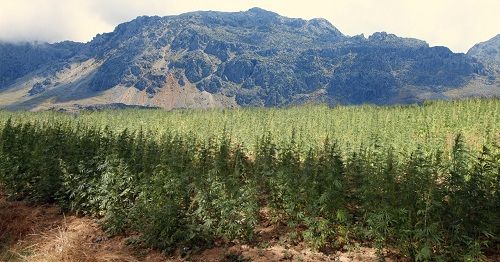
In fact, this is an area that, as the NGOs working in this area denounce, has traditionally been forgotten by the authorities, despite the efforts they have made in recent years. In these drylands, as described by all the people who pass through them, it seems that time has not passed, which also makes it a magical place.
Ketama and its surroundings are a part of Morocco where the majority of the population lives below the poverty threshold, mostly Bereber, but also Arabs and Amazigians, and where the country’s leaders are doing everything possible to stop its current fame, in order to return it into the previous essence. Hence, it is the police authorities themselves who turn a blind eye to the thousands of hectares (approximately 57,000 hectares) of marijuana crops there are around the town.
To this we must add that in 1956, as can be read in a report published by ABC newspaper, Mohamed V (the first sultan to become King after achieving independence in Morocco) issued a decree “favorable” to some peoples to which the peasants of Ketama still cling, because they claim that “neither Hasan II nor Mohamed VI have revoked it”. Thanks to this decree, in Ketama and its surroundings, it is “allowed” not only growing cannabis, something that is palpable to the naked eye because of the large area of crops that can be seen, but also to make hash. Raise your hand, the one who would also want to have something like this for Spain! I’m sure more than one does… isn’t it? ?♂️
Because, if one thing is clear according to the latest study carried out by the Spanish Drug Observatory, is that our country is one of the largest cannabis users in Europe (30% of the population between 15 and 64 years old have consummed it at least once) and that, in addition, Spain is the first border crossing point to introduce hash in Europe, despite the fact that the best consignments only reach some of the famous coffee shops in Amsterdam (of course, by another type of safer routes). Thus, 45% of seizures of this type of product in Europe have been made in Spain, according to the United Nations Drug and Crime Organization (UNODC).
This high demand for cannabis also helps neighbouring Morocco continue to grow that large amount of cannabis, in a land conducive to the growth of some of the best marijuana strains known so far. In fact, according to sources quoted in a documentary produced by Canal Sur (La Ruta del Hachís), they claim that demand is so high that, despite the large amount of cannabis grown in Morocco, it cannot be supplied to everyone, which is why marijuana is also imported from other countries (Spain included) less known for such purposes (either from countries in the east of Europe or the America, among others).
Report on the production of hashish Ketama (Rif)
In short, we can afirm that Ketama or Issaguem enjoys a privileged enclave. The town is a crossroads between some of the main cities in Morocco: it is 167 kilometres from Tetouan, 160 from Fez, 79 from Taunate, or 107 from Chauen, making its traditional Wednesday market, known as Telata Ketama, a place of great tourist attraction for lovers of cannabis and hash, as it will be only there, in addition to some of the best coffee shops in Amsterdam and a few other places on the planet, where you can taste the hash made in Ketama and that, as we have already said, many qualify it as the best hash in the world.
The hash route: from Bab Taza to Ketama
Also known as the Route of the Alhoucemas, it extends from Bab Taza, in the north of the country, to reach Ketama. It is a route that attracts mainly cannabis lovers, but also those who want to know the most rural and ancestral part of Morocco
This is a route that mainly crosses agricultural lands, little traveled by the usual tourists and with a great police presence, due, as you know, to the large areas of cannabis cultivation, especially in the area of Ketama or Issaguem. Of course, if you are looking for a variety of hotels and restaurants where you can stay or taste local cuisine, this is not your route (they are very rare), although it is worth it if you are a cannabis lover, especially if you can hear the pleasant sound of Ketama drums, which I will tell you about later.
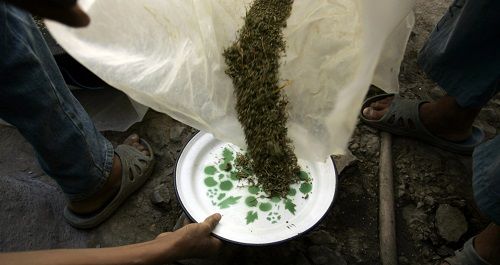
And now that you know some things to consider before you decide to make this route, let’s focus on the main remarkable stops on it:
-Bab Taza, is one of the main entrances to the famous Talasemtane Natural Park and the first stop on the route. It is a village located on a hilltop, which can be accessed through a beautiful leafy forest. From there, different mountain routes depart, through which you can reach the villages of Khizana and Fifi.
-Khizana y Fifi, is the second stop on this ancient hash route. These are typical rural Moroccan villages where there is no shortage of cherry trees, fig trees or quince trees, ingredients that are part of the gastronomy of the area. It is also an area where you can find wild mushrooms, and in terms of infrastructure, it is worth mentioning the traditional mills.
–Another of the points that you can’t miss is Beni Darkoul, the nerve centre of the area, where there are numerous olive oil factories.
-Chefara, is the next point along this route of the hash, which highlights its former mosque. From there, the route continues through Amtrass, an ideal place for photography lovers due to the beauty of its landscape, surrounded by large stones. Undoubtedly, this is one of those places that makes Morocco unique.
-On the slopes of Mount Jebel Tisirene is the town of Bab Berret, an important local souk with a large number of vehicle workshops. Towards the south and crossing the region of Beni Zerual we find the Ouerrha Valley.
-Ketama, is the last and most interesting point of the route. A majestic, simple place where the amount of kilometers dedicated to growing marijuana is striking, giving the sensation of seeing a small leafy forest from the top of its mountains.
Infographics about The Al Hoceima Road
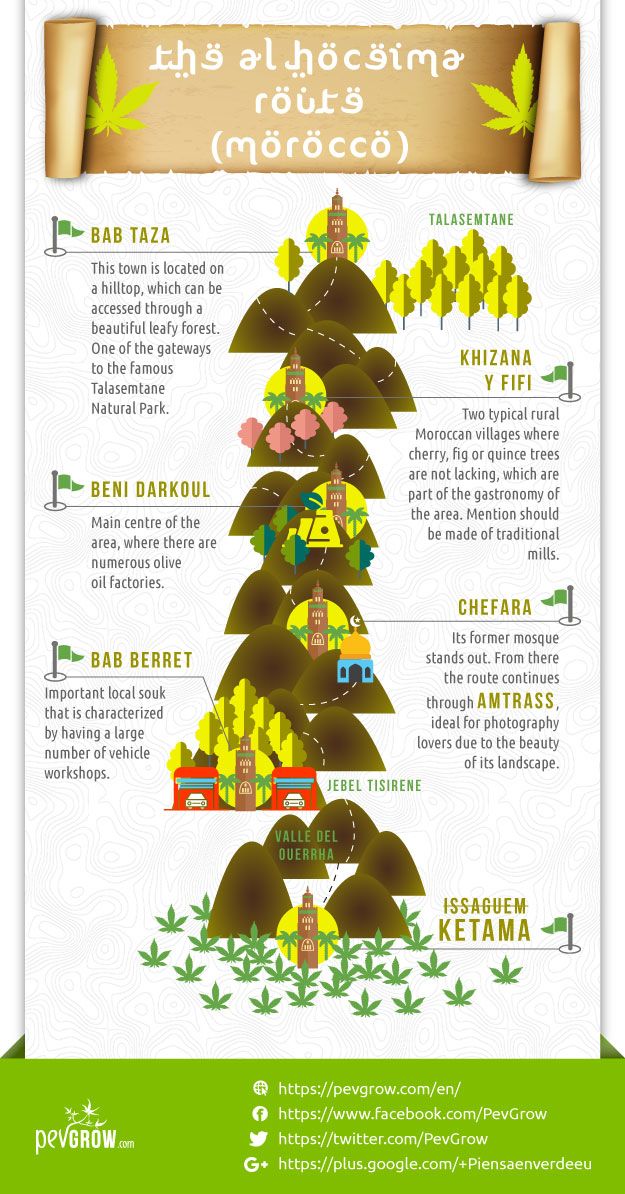
Ketama Marijuana Features
Yeah, I know: the story is interesting, the route even more so, but what really matters to you is the marijuana that is grown in this land, and that cultivated by the hands of Bereber experts, results in the best hash in the world.

So I’m not going to make you wait any longer: let’s talk about the characteristics of marijuana growing in Ketama. The first thing to keep in mind is that this land is cold and abrupt, so the type of marijuana that grows in it must be one that can be harvested soon, but not losing the quality that is expected from it.
Thus, the dominant strain in Ketama is indica, small in size, compact and resinous, with dense buds totally covered with trichomes. Harvesting it is done during the months of September and October, somewhat earlier than it should, so THC levels are not as high as they could give, but this is due to lack of space because of the large amount of seed being grown.
The smell that these plants give off reminds of incense, and in many of its strains the flavors are rather fruity, so smoking them is very pleasant. Some of these cultivars include Blueberry by PEV Bank Seeds, but also others that you can find in Pevgrow with the name of its origin, Ketama by World of Seeds, ideal for making homemade hash in Moroccan style if you wish. Other outstanding cultivar ideal to make hash with high medicinal value is the potent Blue Hash by Dinafem seeds , among others, which is also characterized by its fruity and penetrating flavor, with a powerful psychoactive effect.
In addition to the fact that the main genotype is indica, the majority phenotype is usually Afghan, although, as we say, the variety on chemotype is very wide. Flavors, in general, are usually sweet, as they are the ones that are most requested when it comes to making the best hash.
How hashish is made in Issaguem: Ketama drums
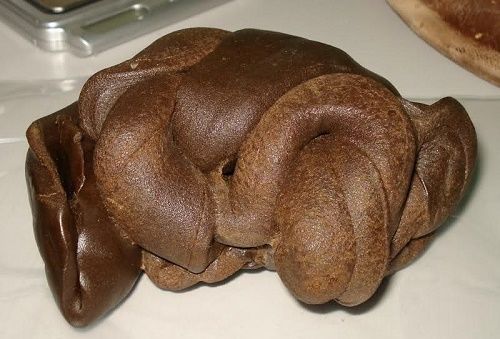
If you know the famous hash of Ketama you know what I am talking about when I quote the drums of Ketama, but not everyone associates them to the preparation of hash. A development for which a rudimentary but effective system is needed, which has passed from generation to generation, as well as a large amount of cannabis. Do you think I exaggerate? Well, take note: just to make one kilogram of hash, you need 100 kilograms of marijuana. Incredible, isn’t it?
Very simple: in reality, we are not talking about drums as such, but about the sound that the sieves or screening cubes where resin is extracted create when their owners sift cannabis plants. I’ll explain myself better.
The Berebers, the main producers of this area and, therefore, the best hash in the world, use plastic buckets (the same ones we can use to wash dirty laundry), which they cover with a mesh (a nylon cloth that is fully stretched to do this function), on which they will place the cannabis leaves that have been left to dry in the sun until November, when it is already cold and the resin comes out better. Once the grass is in place, the last step is to cover it so that no yellow powder escapes, which will be sifted naturally by those expert hands, thanks to wooden sticks.
It is precisely the pounding of these sticks against their sieves, which makes the sound they emit is similar to that of a drum. By doing so many families at the same time, the sound is heard miles away from these homes. The whole family participates in this process, which is essential and has served to ensure this tradition, which has become a trade, and that continues today.
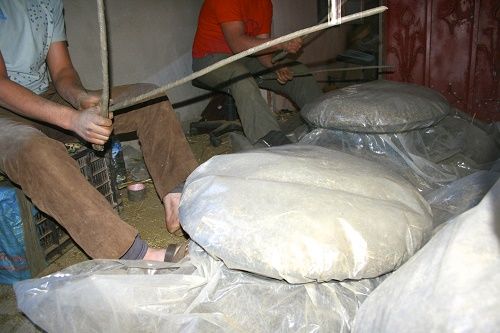
Once the powder has been extracted, there are two ways, according to the ketamani tradition, of delivering that hash: either by kneading it in hot, which results in that brown color that we know, or treating it cold, which makes it more compact and easy to break and therefore not practical for export. Last one usually stays in Morocco.
Ketama Marijuana Infographics
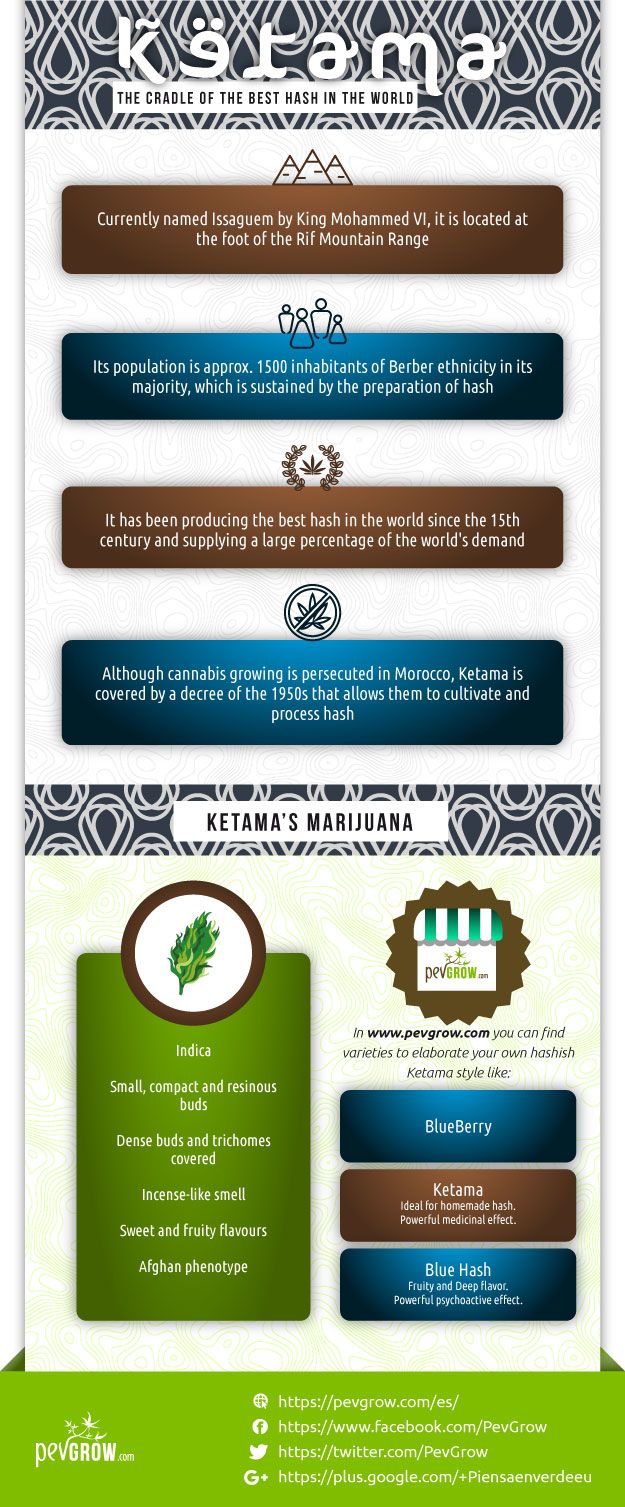
Ketama, cinema, documentaries and more
In spite of the hostility of this land, its fame for cannabis has given rise to different documentaries about it, for example, the one we mentioned before that has been made by Canal Sur (Andalucia, Spain) or the famous and award-winning film El Niño (Spain), where in one of the moments of the film you can see what this land is like, you can listen to the famous drums of Ketama, and you can see how the most famous hash in the world is made.
Fragment, film El Niño
Away from the cinema is the famous music group Ketama (a famous flamenco-pop spanihs group), which owes its name to this area of Morocco. Do you know any other books, songs or movies that talk about it? We’d love for you to share it with us.
Conclusion
Without a doubt, travelling to Ketama can be an amazing experience, not only because you can consume the best hash in the world, but also because you can see how it is made, since this technique and the sound of its drums is really worth it; yes, if you go with a local guide you can trust, better than better, that… you never know.?
And you, have you visited this area of Morocco? How did you do that? Were you able to enjoy this experience? Would you like to do that? Tell us about it and if you liked the article, I would love you to help me spread it in networks.?♂️
By Noelia Jiménez, PevGrow Team


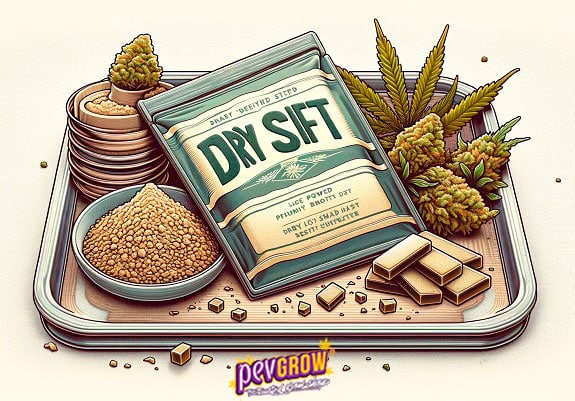
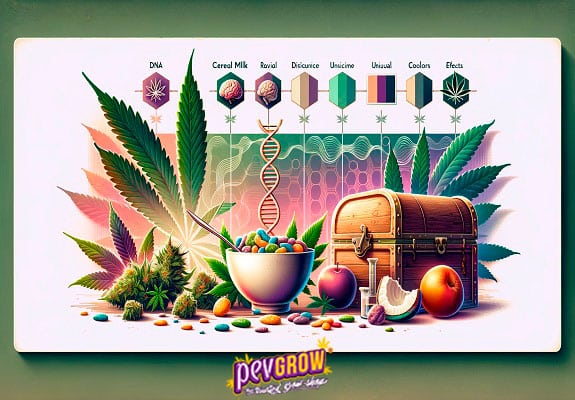
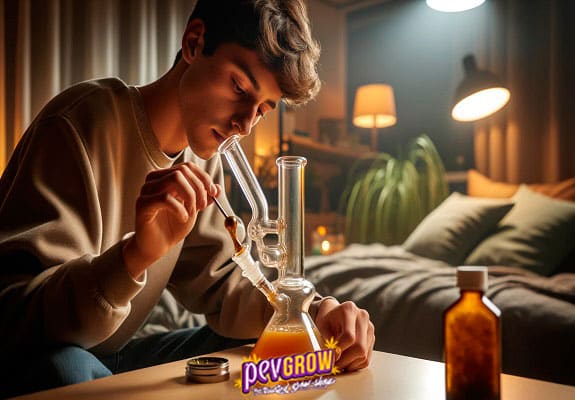

A paragraph said it takes them
100 kilos to make 1 kilo of hash, I myself made nearly 4oz of the best hash ever with 900 grams of trim beat sifted through 150 micron sieve. Its semi melted in room temperature snd and became sticky beyond handling like normal hash.
I make some incredibly delicious and potent hash , Jelly Hash with kief mixed with whole plant extract, its crazy potent, tastes amazing.
I recently dry sifted about a kilo of trim and shake a friend gave me ( mystery strain) I sifted all it through a trim bin, got over 90 gm kief, this kief turned out to be top shelf, it started to melt and form into a chunk of hash in room temperature with gravity alone. Too bad I can attach photos
Dean of Rochdale College
Sounds great!
If you want you can send us a picture to this email:
customer@pevgrow.com
Regards
We visited Ketama in 1970 and, obviously went to see the hashish production, but stayed because of the warm and wonderful people. They invited us into their homes, fed us and took care of us. I cannot say enough about the warmth of the people of Ketama. We hope to visit there again some day.
Awesome article! I was there around the same time. We drove up to Ketama from Fes and when we reached Ketama young kids would come running up to our vehicle waving pressed sheets of hash! We knew better than to purchase hash from them however. We pulled into town and and eventually met someone who was excited to take us to his family’s farm deep in the mountains. We stayed several days with his family and even pitched a tent in the middle of a Kief field that had been harvested! We enjoyed mint tea from wild mint plants that were everywhere. We even purchased freshly pressed sheets of hash. Our guide explained the process of screening the Kief plants and the best hash was referred to as Double zero. Rich with resin. The test for a good grade of hash was to take a pinch of unpressed hash rolled between the thumb and forefinger into a cone. If it would stay lit you knew it was primo hash. The smell and taste was truly amazing!
I agree with u waston, regards
Hashish was not produce in Ketama pre 1960. This article is not historically correct, Kief has been grown for centuries, and smoked mixed with black tobacco in sebsi pipes, one hit at a time.
Bismillah blessed be kief….